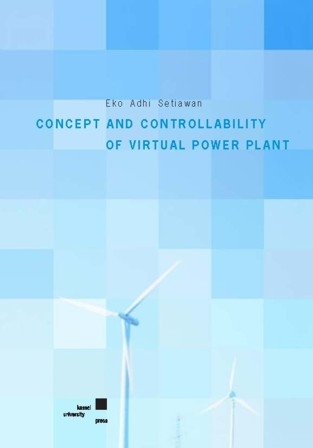
Concept and controllability of Virtual Power Plant
Seiten
2007
|
1., Aufl.
Kassel University Press (Verlag)
978-3-89958-309-0 (ISBN)
Kassel University Press (Verlag)
978-3-89958-309-0 (ISBN)
- Titel ist leider vergriffen;
keine Neuauflage - Artikel merken
http://www.uni-kassel.de/hrz/db4/extern/dbupress/publik/abstract.php?978-3-89958-309-0In the end of 20th century the conception of electrical power supply is morphing gradually from centralized into decentralized system, indicated by increasing the installation of distributed generation on the main grid. With emerging of advanced communication and information technology, the aggregation control of several DG units can be developed as virtual power plant in order to provide added-value to the electric power system.
This thesis presents definitions and types of Virtual Power Plants (VPP), then developing control through numerical simulation. The thesis proposes three DG controls namely Basic Autocontrol System (BAS), Smart Autocontrol System (SAS) and Tracking Efficiency Autocontrol System (TEAS). The BAS controls the DG output power with the objective to cover the local load demand. The drawback of this system is that the coordination among DG units is not established yet. In contrast to the BAS, the SAS has a control coordination centre which is responsible of controlling a certain number of DG units. The SAS controls and coordinates the operation of the dedicated DG units in order to minimize power exchange with the superior grid. However the efficiency issue is not considered at two previous control systems, therefore the TEAS was developed. Principally this system is similar to the SAS in terms of information exchange but additionally optimizes the operation efficiency of DG units. This is accomplished by tracking the systems’ most efficient operation point. All control systems have been implemented into a simulation environment. The simulation results show that all developed control systems are capable to minimize the power exchange with the superior grid. The systems are able to follow changing load conditions. Furthermore the simulation results prove the ability of TEAS to optimize the system efficiency.
Finally the contribution of VPP to voltage regulation is investigated with several scenarios. The influence of both, active and reactive power injection by DG units on the voltage profile is studied in a test network
This thesis presents definitions and types of Virtual Power Plants (VPP), then developing control through numerical simulation. The thesis proposes three DG controls namely Basic Autocontrol System (BAS), Smart Autocontrol System (SAS) and Tracking Efficiency Autocontrol System (TEAS). The BAS controls the DG output power with the objective to cover the local load demand. The drawback of this system is that the coordination among DG units is not established yet. In contrast to the BAS, the SAS has a control coordination centre which is responsible of controlling a certain number of DG units. The SAS controls and coordinates the operation of the dedicated DG units in order to minimize power exchange with the superior grid. However the efficiency issue is not considered at two previous control systems, therefore the TEAS was developed. Principally this system is similar to the SAS in terms of information exchange but additionally optimizes the operation efficiency of DG units. This is accomplished by tracking the systems’ most efficient operation point. All control systems have been implemented into a simulation environment. The simulation results show that all developed control systems are capable to minimize the power exchange with the superior grid. The systems are able to follow changing load conditions. Furthermore the simulation results prove the ability of TEAS to optimize the system efficiency.
Finally the contribution of VPP to voltage regulation is investigated with several scenarios. The influence of both, active and reactive power injection by DG units on the voltage profile is studied in a test network
| Sprache | englisch |
|---|---|
| Maße | 148 x 210 mm |
| Gewicht | 180 g |
| Einbandart | Paperback |
| Themenwelt | Technik ► Elektrotechnik / Energietechnik |
| Schlagworte | Aggregation Control • Communication • Distributed Generation • HC/Technik/Elektronik, Elektrotechnik, Nachrichtentechnik • Optimum Efficiency • Virtual Power Plant |
| ISBN-10 | 3-89958-309-4 / 3899583094 |
| ISBN-13 | 978-3-89958-309-0 / 9783899583090 |
| Zustand | Neuware |
| Haben Sie eine Frage zum Produkt? |
Mehr entdecken
aus dem Bereich
aus dem Bereich
Kolbenmaschinen - Strömungsmaschinen - Kraftwerke
Buch | Hardcover (2023)
Hanser (Verlag)
49,99 €


